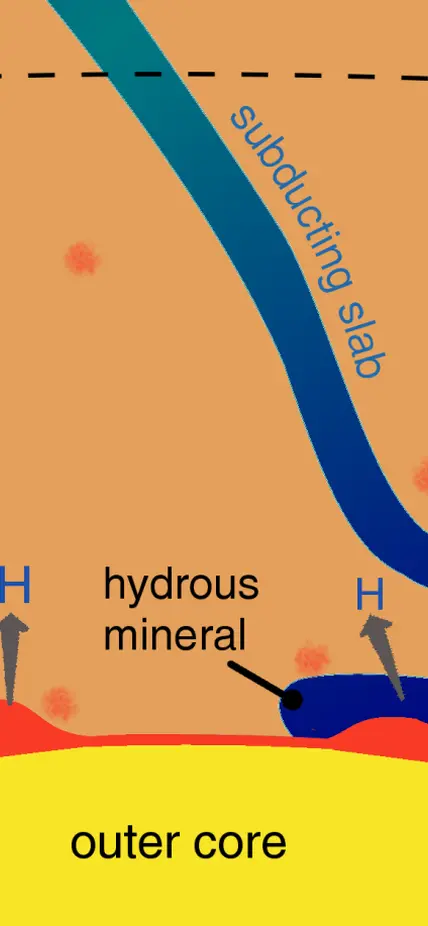Washington, D.C.—In Earth’s interior, water (H2O) plays an important role in rock physics, but geoscientists rarely treat water in its constituent forms, that is as hydrogen plus oxygen. New work from a team led by Carnegie’s Dave Mao has identified that hydrogen can escape from the water under conditions found in Earth’s lower mantle leading to a new paradigm in lower-mantle chemistry. Their results were published in Proceedings of the National Academy of Sciences, U.S.A.
In the atmosphere, hydrogen is a colorless, transparent gas. It bonds with oxygen to form water, which fuels the biosphere on the Earth’s surface. Deep in the rocky world beneath our feet, so-called hydrous minerals enriched with water mainly exist in subduction slabs—tectonic plates that sink into the interior. These slabs are relatively colder than the mantle into which they descend. At ambient condition, the chemistry of water is so stable that it is the major hydrogen carrier in surface water. For a long time, it was thought that the cycling of hydrogen in the Earth’s solid crust and mantle is equivalent to the cycling of water.
“The stability of water in hydrous mineral might break at the lower mantle,” said Mao. Using advanced diffraction tools, the team, including Carnegie’s Liuxiang Yang, Yue Meng, alumni Qingyang Hu, Duck Young Kim, and collaborators Jin Liu and Wendy Mao of Stanford University, discovered hydrogen was freed from hydrous minerals in its elemental form.
The team subjected a typical hydrous mineral—goethite—to lower mantle pressure-temperature conditions (about 720,000 atmosphere, and 3140° F or~2,000 K), and were able to identify released hydrogen. The hydrogen loss closely correlated with the temperature heating and duration.
“Oxygen and hydrogen cycles are separated above the Earth’s core,” said Qingyang Hu, the lead author, “Hydrogen is not freezing, instead, it is freed from rocks.”
The team’s results have led to a paradigm change in the planetary science of lower-mantle chemistry. The released hydrogen can directly penetrate the liquid outer core, which is considered to have a substantial amount of hydrogen. Free hydrogen can also rise upwards, partially recovering its loss from the subduction of hydrous minerals, and closing up the hydrogen cycling to the Earth’s surface.
Image Caption: This diagram shows the hydrogen cycling in the deep Earth. Image courtesy Qingyang Hu
